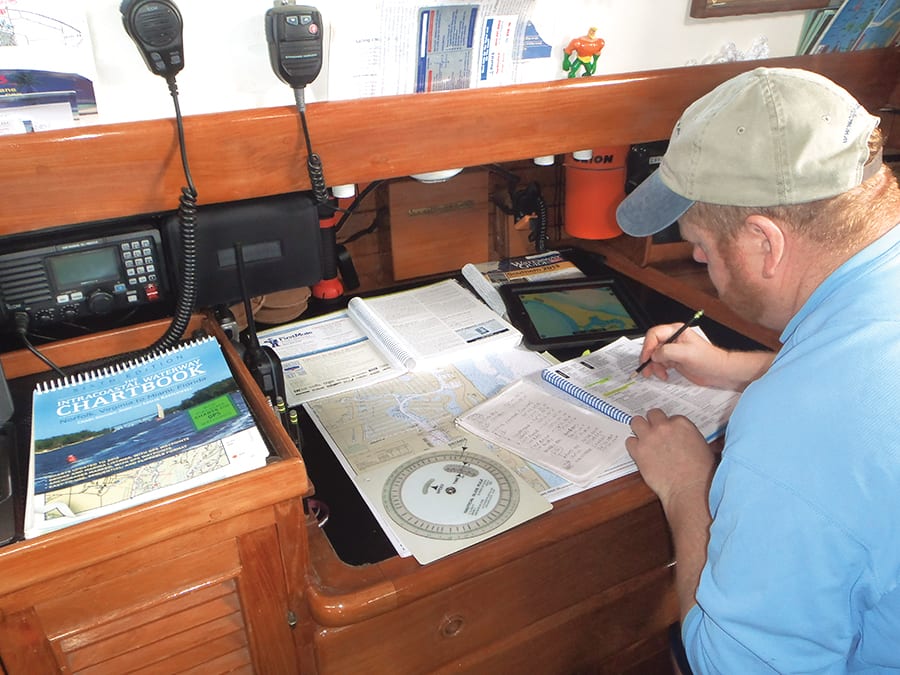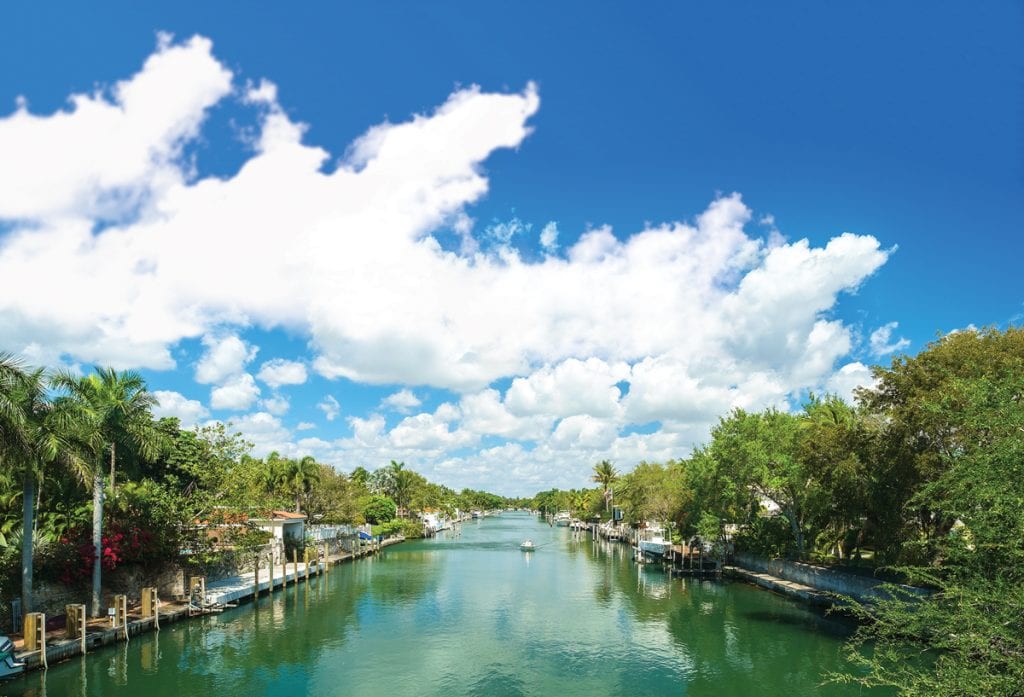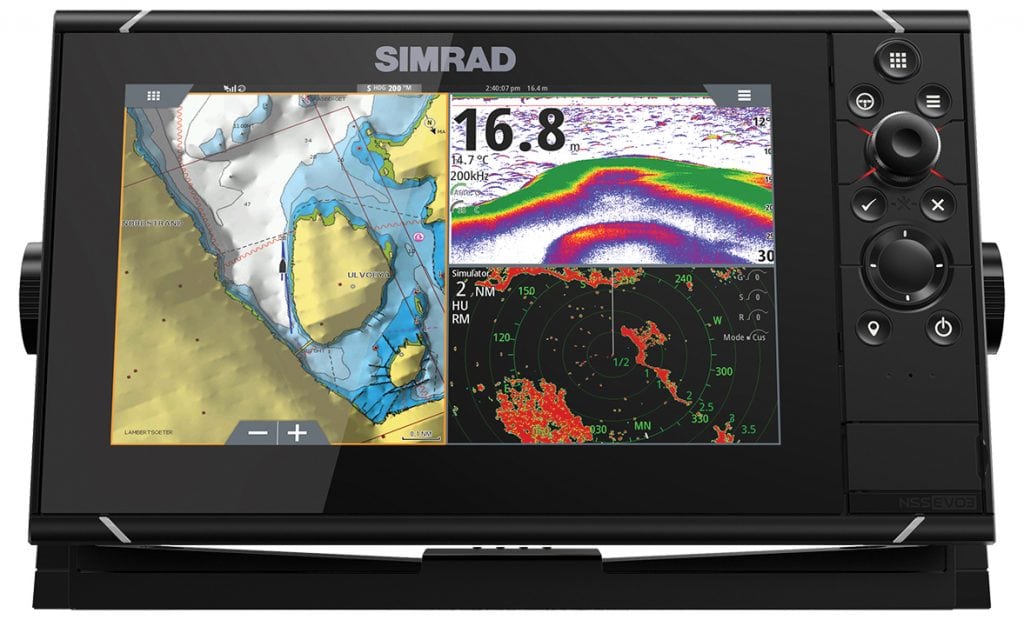Take the time to enjoy the road less traveled when planning your ICW trip.
When it comes to cruising the ICW, the oft-quoted phrase “getting there is half the fun” is apropos. From historic towns and peaceful anchorages to big city bustle and vibrant nightlight, there’s so much to see and do along its 1,100-mile length that you’d be hard-pressed not to find something enjoyable for every member of the crew. Here is some helpful information on planning your ICW trip.
However, keep in mind that entering a new anchorage or harbor after a long day on the ICW is exciting, it can also carry a considerable amount of stress, particularly if entered at dusk or in less than ideal weather conditions. There are navigational issues to contend with as well as all the other need-to-know answers once you arrive.
Where’s the best place to anchor or the location of that recommended marina? Where can I get supplies or buy fuel? If tonight is all-you-can-eat ribs night at Hawg Heaven Restaurant, is there a dinghy dock or public shore access nearby so the crew can get their pork on?
Plan, Plan, Plan
The answers and the key to safe and less stressful journey is proper planning for your ICW trip, which starts with the most up-to-date ICW guidebooks and charts for the area and studying them well in advance.
Every extended ICW trip should include a general timeline and list of the desired stops to make along the way, but it’s the day-to-day progress that should actually drive the schedule.
I always plan out the next day’s run prior to heading out, typically the night before, which also gives me a chance to review the latest weather forecasts and their potential effects on my travel plans.
When you plan the next day’s run, comb through the charts and guidebooks, and note things like marina locations, possible anchorages, bridge or lock schedules, and potential ICW trouble spots, such as shoals, sunken vessels, disabled lights, markers, etc. Know these things ahead of time to help generate both peace of mind and a more enjoyable trip. Include contingency plans for anchorages or stopovers in case you are delayed or, in some cases, if you make better than expected time and decide to push on a bit further.
Nightly Routine
Part of my nightly routine is to trace the route for the next day’s run and review notes and comments provided on online apps and programs (see sidebar), such as Garmin’s Active Captain, a popular interactive online cruising guide. Programs such as this can be a very useful tool as long as you take into consideration the double-edged-sword nature of the comments themselves.

Be aware that generic reports of a “great” anchorage with plenty of water or statements like “We ran aground here!” don’t do you much good if the poster fails to include basic info such as their boat’s draft, the state of the tide, etc. Facility reviews should also be viewed with a grain of salt at times: “The dock master hates Algerian Snaggle-tooth Poodles (like our Fluffy) so we’re never coming back and you shouldn’t either!”
In addition to weather, the number of miles I plan for each day depends on a variety of factors, from distances between suitable anchorages to towns or areas I want to visit. Depending on your draft, tide schedules will also play a major role when transiting known shallow spots.
Many ICW cruisers become destination driven and hurry to get from point A to point B as quickly as possible. Time and schedules are a major factor here, but my philosophy is that the trip itself is just as important and should, therefore, be as enjoyable as the destination.
Be Reasonable When Planning Your ICW Trip
On my vessel’s average speed of six knots, I typically plan for a run of around 40 statute miles each day. Viewing my trip as a whole, this allows me to progress along the ICW at a reasonable clip but also provides stopover days for rest, sightseeing, weather delays, etc. Although I experience shorter and longer daily runs (60 to 70 miles in some cases), 40 miles is a good average for my boat and one that provides additional time to arrive at my planned destination before dark should unexpected delays crop up.
I don’t like traveling the ICW at night because I often travel solo. I’ve done it before (both as a recreational boater and while in the U.S. Coast Guard), but it adds a whole new level of stress and unnecessarily increases the chances of getting lost, running aground or having an accident.
Take Breaks
Finally, I also try to schedule one layover day for every three to four travel days—more if I’m someplace nice with a lot to see and do. These layover days provide time to catch up on boat chores as well as allow me time to simply decompress and enjoy the journey on my way to the destination.
Useful Sites
Active Captain
activecaptain.garmin.com
Dozier’s Waterway Guide
waterwayguide.com
Navionics
navionics.com
Richardson’s Maptech
richardsonscharts.com
Tips for the Intercoastal Waterway
- Always keep a sharp lookout for “prop inspectors” (floating logs, branches, other debris), particularly when transiting narrow channels and canals. The same goes for other hazards, such as crab pots, which can be found anywhere.
- Always have your anchor ready to deploy at a moment’s notice.
- Always monitor VHF channel 16 (general hailing and distress) and if possible, channel 13 (bridge to bridge).
- When anchoring, the key is to be seen. Use an appropriate anchor light; however, they can be difficult to see, particularly if located atop the mast of a sailboat. I purchased a 12-inch neon light bar from an auto parts store and hang it in the cockpit as well to increase visibility to others.
- Make marina reservations ahead of time, preferably a day or two in advance if your schedule is accurate enough. At a minimum, I like to call the morning of my projected arrival day to confirm.
By Frank Lanier, Southern Boating
November 2018













